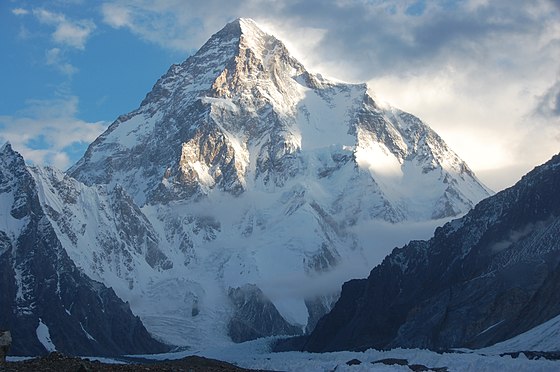There is no need to introduce mountaineering, a famous discipline that sometimes involves climbing the highest and most difficult mountains. Among the most famous are the peaks above 8,000 metres. These peaks are among the highest in the world and are located mainly in the Himalayas and Karakorum.
Despite recent records, they still remain a challenge for even the most experienced climbers. Let’s take a look at the 14 mythical peaks over 8,000m high…
1 – The summits and their characteristics
There are 14 vertiginous peaks over 8,000 metres in height. The most famous of these is Everest (named after the Welsh scientist Sir George Everest), located in the Himalayas between Nepal and China. With an altitude of 8,848 metres, Everest is considered the highest mountain in the world.
The other peaks above 8,000 metres are K2 (8,611 metres), Kangchenjunga (8,586 metres), Lhotse (8,516 metres), Makalu (8,485 metres), Cho Oyu (8,188 metres), Dhaulagiri (8,167 metres), Manaslu (8,156 metres), Nanga Parbat (8,126 metres), Annapurna (8,091 metres), Gasherbrum I (8,080 metres), Broad Peak (8,051 metres), Gasherbrum II (8,035 metres) and Shishapangma (8,027 metres).
These peaks present different difficulties in terms of climbing, depending on their altitude and geographical location. Some, such as K2 and Annapurna, are considered the most difficult because of their particularly long and complex climbs. Others, such as Cho Oyu and Shishapangma, are considered more accessible, as they have less steep and less exposed slopes.

The K2 summit
2 – The great figures of mountaineering
Peaks over 8,000 metres were first climbed in the 1950s and 1960s by internationally renowned mountaineers. Among the most famous were Sir Edmund Hillary and Tenzing Norgay, who climbed Everest in 1953. Since then, many other climbs have been made, with increasingly impressive records.
For example, Reinhold Messner was the first person to climb all peaks above 8,000 metres without using supplementary oxygen. He was also the first person to climb Everest solo and without assistance. Junko Tabei was the first woman to climb Everest in 1975, while YuChangsheng became the oldest person to climb Everest in 2020 at the age of 70. Temba Tsheri is the youngest climber to have reached the summit of Everest at the age of 16 in 2001.
The climbs of these peaks have also had their tragic moments, with accidents and loss of life. In 1996, a multi-team expedition to Everest suffered a series of tragedies, with several deaths, including a severe storm that hit the mountain. This tragedy was chronicled in the book “Tragedy on Everest” by Jon Krakauer, who was part of the expedition.
Despite these risks, climbers continue to challenge the 8,000-metre peaks, seeking to push the boundaries of human exploration and achieve ever more impressive feats.
3 – The harmful effects of climbing
While climbs to these peaks are often considered exceptional feats, they also have negative consequences for the environment and local populations. Climbers often leave behind waste and traces of their passage, thus contributing to the pollution of these fragile natural environments.
In addition, climbs to peaks above 8,000 metres are often led by local teams and guides, who are sometimes exploited. Local authorities also seek to profit from these ascents by introducing taxes and permits that are often costly, thus creating tensions with local communities.
Finally, the ascents of these peaks often reflect political and geopolitical tensions, particularly in the Himalayas and Karakorum. The borders between countries are often poorly defined, which creates conflicts for access to the summits and for the organisation of expeditions.
In conclusion… summits above 8,000 metres are exceptional challenges for mountaineers from all over the world, but they also have sometimes harmful consequences for the environment and local populations. As the recommendations remind us, mountaineers should therefore be aware of these issues and take care to minimise their impact on these fragile environments, while respecting local communities and acting in a spirit of international cooperation.

